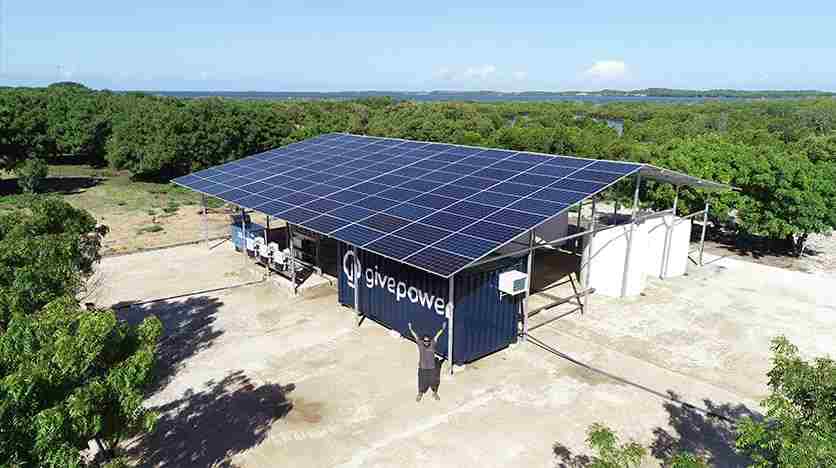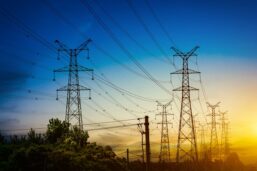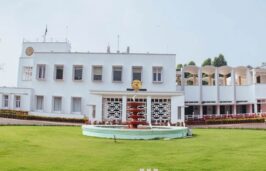Highlights :
Solar power is demonstrating the transformative potential of decentralized and renewable energy sources in enhancing human lives. In this context, we explore four innovative opportunities facilitated by solar energy panels: water desalination, solar cookers, solar power integration for MSMEs (Micro, Small, and Medium Enterprises), and educational institutions.

“The real wealth of a nation is its people. The purpose of development is to create an enabling environment for people to enjoy long, healthy and creative lives,” said noted economist and Noble Prize winner Mahbub-ul-Haq. I was reminded of this profound universal concept that underpins today’s ‘Human Development Index,’ which serves as the defining and quantifying instrument for assessing global human well-being. Solar energy has recently started showcasing its capacity not only to enhance but also to serve as a catalyst for human development in multiple ways.
Economics has it that per capita power consumption is directly associated with human development. Decentralised/distributed renewable energy deployment is helping in raising the standards of human life and it goes beyond mere economic activities.
The pursuit of achieving the Sustainable Development Goals (SDGs) by 2030 has spurred an expansion in the research and development (R&D) funding allocated by national governments, with a significant emphasis on renewable energy, particularly solar power. International organizations are actively facilitating the exchange of innovative ideas and technologies on a global scale, catalyzing remarkable improvements in the lives of people in some of the world’s most disadvantaged areas. Human development, as a comprehensive notion encompassing an individual’s overall well-being, is increasingly intertwined with the pivotal role played by solar energy in this context.
Desalination & Clean Drinking Water
No life can exist without water and no human development can take place in the absence of clean potable water. Solar energy is helping desalination of sea waters and supplying it to the poorest of poor human habitations in the world. The best example is available today from the West African country of Kenya where a new desalination facility called ‘GivePower’ has been launched that runs exclusively on solar power. This facility is energy efficient and offers affordable water to the people of the coastal area of Kiunga. On an everyday basis, the solar run desalination plant supplies about 75,000 liters of fresh drinking water to satisfy the needs of 25,000 people.
As per the United Nations, this has reduced the daily run of 3.7 miles of the women living in that area, reduced diseases caused by saline and contaminated water, increased their health, increased human labor, stepped up economic activities and income levels of households. Kidney failures are no longer talk of the town. Women and children are the biggest beneficiaries of the solar powered fresh water supply.
Multiple successes of solar run desalination facilities across the geographical locations and climates has compelled the Bangladeshi government to look for the installation of 1,140 solar-powered water desalination units across 16 coastal districts where fresh water supply is a grave challenge. The R&D is increasing in this segment. Researchers from the Massachusetts Institute of Technology (MIT) in the USA and Shanghai Jiao Tong University in China have invented a passive solar evaporation system that can clean saline water and waste water which could further help the communities to have access to drinkable water. Guess what? It costs $4 only to own one for a household.
Solar Cookers For All
Many communities still rely on woods and charcoal to cook their food which has its own ill effect on their health and overall well-being. The compound parabolic concentrator based solar cookers come with three dimension and non-imaging optics.
The experiment in Mexico holds that once these ultra-efficient solar cookers were introduced to a backward community, it was found that the willingness of the population to insert new eco-technologies to their everyday lifestyle was great. The solar cooker immediately reduced timber and resource extraction. The inhalation of combustion smoke went down eliminating respiratory diseases which allowed people to contribute to the family’s economy. The rate of success was very high as 85% of the people actually used the solar cooker. A mere 15% could not even get it due to extraneous reasons like change of address, family separation, etc.
In India, the Central Government wants its novel Indoor Solar Cooking System, called the ‘Surya Nutan’ to reach three crore households in the next few years. The solar cooker can also be plugged into the electric grid on cloudy days and its efficiency is equal to that of an LPG burner. After the thundering success of ‘Izzat Ghar’ (toilets), the Indian Government now looks at the possibilities of ‘Izzat ka Khana’ for its women.
MSME, Livelihood & Dignity
Shortage of power has affected the growth and health of India’s MSME sector that makes up 63.4 million unincorporated million units and employs 111 million people. Most of the industries have been running below capacity in the dearth of adequate electricity harming productivity and employment generation.
The rooftop solar in multiple MSME clusters has brought a dawn of virtuous cycle benefiting every life. The solar power has brought down the cost of electricity consumption, which on an average, is up to one-fifth of their operation cost.
In most clusters it has been found that the MSME industries function timely. The workmen attend their 9 to 6 jobs. There is no wastage of manpower and the industries meet their business targets adding immensely to the supply chain. The solar powered clusters are now moving to value addition in the supply chain.
The wage earners are getting reasonable salaries and on time along with social security items like insurance etc. Both the employed and the employer are also reaping their shares of ‘leisure’ contributing to their families causing emotional and psychological well-being; yet raising their standard of living. The centre of this all is solar.
Apart from productivity, the profitability of MSMEs also increases as they save on power bills. Presently, most of the MSMEs pay Rs 8 and higher per unit presently. A novel project started by World Bank and State Bank of India (SBI) worth $625 million is supporting India’s significant Rooftop Solar roll out for MSMEs. The duo has been joined by many Indian banks. Recently, Yes Bank announced its lending scheme ‘YES KIRAN’ under which it offers financial assistance to MSME manufacturers that want to install solar power panels on their buildings or premises. Bank of Baroda (BoB) has an alliance with Aerem Solutions for similar objectives. The Union Bank of India (UBI) and Tata Power are also helping MSME transition to solar energy.
Education, the Prime Precursor
Education is the most powerful tool to bring positive changes in human lives and it’s incomplete without digital learning/modern learning systems. The globalised world and learning outcomes heavily depend on new age tools like computers, laboratories and so on. These tools work on electricity and traditional power lines are unable to support the educational institutions without long power cuts. The interiors of third world countries have weak educational outcomes due to non-existent or irregular power supplies. Solar energy is transforming centres of education; especially primary and secondary level of education.
Let’s take the example of a small solar microgrid introduced in the interiors of southern Africa’s poor country called Malawi. The Mthembanji village experiment that came with the help of foreign funds has thrown up life changing content. There is ample amount of solar electricity at the local Primary School which is available at a discounted rate. The immediate result was that school enrolment increased as it attracted both eco-minded students and those looking for better learning opportunities. In the first year itself, there was a more than fivefold increase in local primary students who progressed to high school. They could now study for a greater number of hours as lights could be lit even after the sunset. It has been found that school rooftops are one of the best places where solar panels work and they require minimal maintenance.
In many schools in the interiors, computers and science labs have been introduced for the first time; all credit to solar power panels.
In India, states like Telangana and Odisha that have high rural and tribal populations in tough geographies are increasingly solarising their schools. Tribal schools, often residential, are increasingly deploying solar panels on their roofs. Solar power use is most empowering for the most marginalised sections. Today, the primary and secondary schools of India have approximately 65% and 91% power connections. This signifies that there is enough space for solar installations.
Reduced power costs have also allowed schools to hire more teachers and increase their salaries.
Solar energy has showcased its versatility by transforming individuals into valuable human resources, empowering them to evolve into essential human capital. With all thanks to the solar panels of the day: the most important things are no longer least talked about!






























